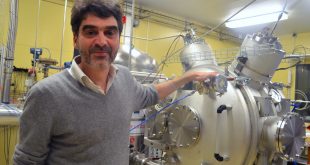Digital twins, digital doubles – what exactly do these terms mean? Raksmey Phan, an engineer at the Mines Saint-Étienne Centre for Biomedical and Health Engineering (CIS)[1], talks to us about the advantages and advances offered by these new tools, as well as the issues involved. What does a digital twin refer to? Raksmey Phan: If you have a digital, …
Read More »Search Results for: algorithm
AiiNTENSE: AI for intensive care units
The start-up AiiNTENSE was incubated at IMT Starter and develops decision support tools for healthcare with the aim of advising intensive care personnel on the most appropriate therapeutic procedures. To this end, the start-up is developing a data platform of all diseases and conditions, which it has made available to researchers. It therefore seeks to provide support for launching clinical …
Read More »Why have girls been turning their backs on computer science?
Column written in partnership with The Conversation. By Chantal Morley from Institut Mines-Télécom Business School. For an organizer of a careers fair or an engineering school open day, the gender-bias in digital professions is clear. Boys are far more likely than girls to flock to stands about computer science or other digital professions. It is easy to assume that this is …
Read More »Our top ten articles of 2019 !
At this beginning of the year 2020, I’MTech takes a look back at 10 of the most noteworthy articles from the past year. What scientific topics made headlines at the close of the 2010s and the dawn of the 2020s? A look at this pivotal year, in which unsurprisingly, AI and the environment feature prominently… but not exclusively! #1 …
Read More »Is dark matter the key to the medical scanner of the future?
A team of researchers at IMT Atlantique is developing a new type of medical scanner called XEMIS. To create the device, the team drew on their previous research in fundamental physics and the detection of dark matter, using liquid xenon technology. The first time the device was tested was using small animals. It allowed the scientists to significantly lower the …
Read More »An “electronic nose” analyzes people’s breath to help sniff out diseases
In partnership with IMT Atlantique, a team of researchers at IMT Lille Douai have developed a device which can measure the level of ammonia in someone’s breath. The aim of the artificial nose is to use this device to create a personalized follow-up care for patients affected by chronic kidney disease. Eventually, the machine could even allow doctors to detect …
Read More »Good in Tech: a chair to put responsibility and ethics into innovation
On September 12, the Good in Tech chair was launched with the aim of making digital innovations more responsible and ethical. The chair is supported by the Institut Mines-Télécom Business School, the School of Management and Innovation at Sciences Po, and the Fondation du Risque, in partnership with Télécom Paris and Télécom SudParis. This means that the Good in Tech …
Read More »SERTIT: satellite imagery for the environment and crisis management
I’MTech is dedicating a series of stories to success stories from research partnerships supported by the Carnot Télécom & Société Numérique Institute (TSN), to which Télécom Physique Strasbourg and IMT belong. The regional image processing and remote sensing service (SERTIT) has specialized in producing geographic information production for over 30 years. It is linked with the ICube[1] laboratory, a key …
Read More »Imaging to help people with brain injuries
People with brain injuries have complex cognitive and neurobiological processes. This is the case for people who have suffered a stroke, or who are in a minimally conscious state and close to a vegetative state. At IMT Mines Alès, Gérard Dray is working on new technology involving neuroimaging and statistical learning. This research means that we can improve how we …
Read More »Military vehicles are getting a new look for improved camouflage
I’MTech is dedicating a series of articles to success stories from research partnerships supported by the Télécom & Société Numérique Carnot Institute (TSN), to which IMT Atlantique belongs. How can military vehicles be made more discreet on the ground? This is the question addressed by the Caméléon project of the Directorate General of Armaments (DGA), involving Nexter group and IMT Atlantique …
Read More » I'MTech L'actualité scientifique et technologique de l'IMT
I'MTech L'actualité scientifique et technologique de l'IMT









